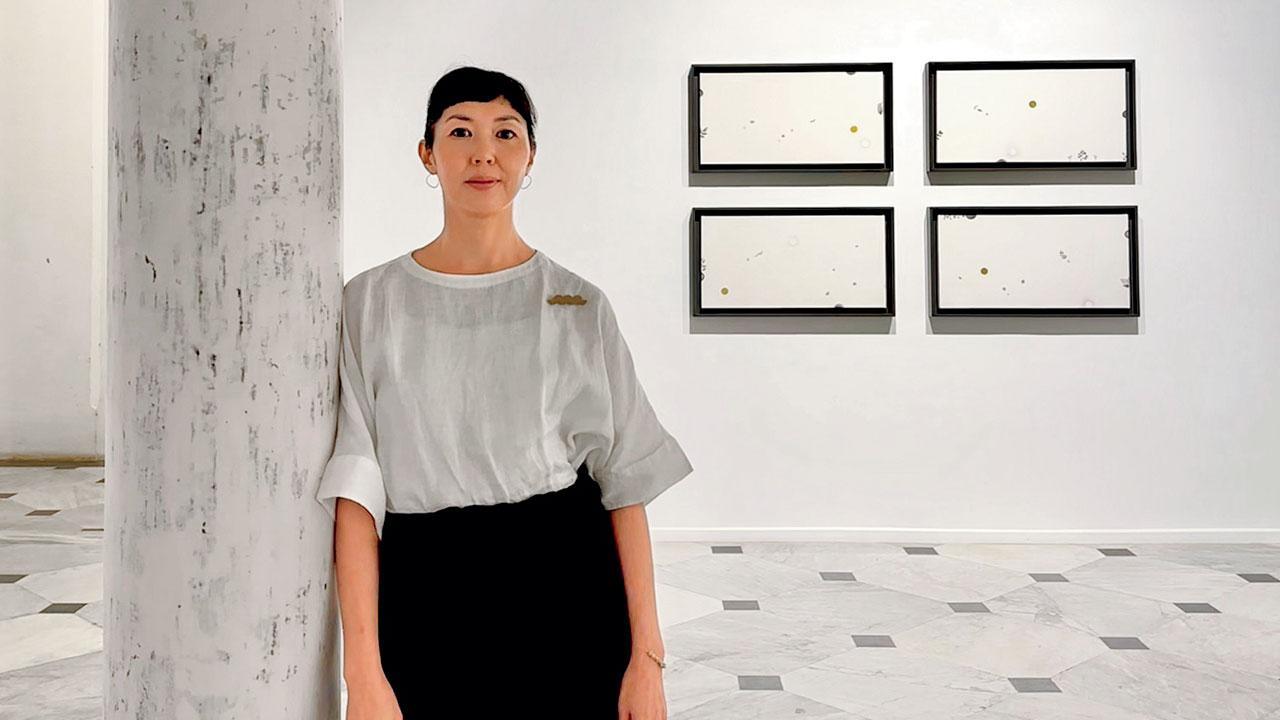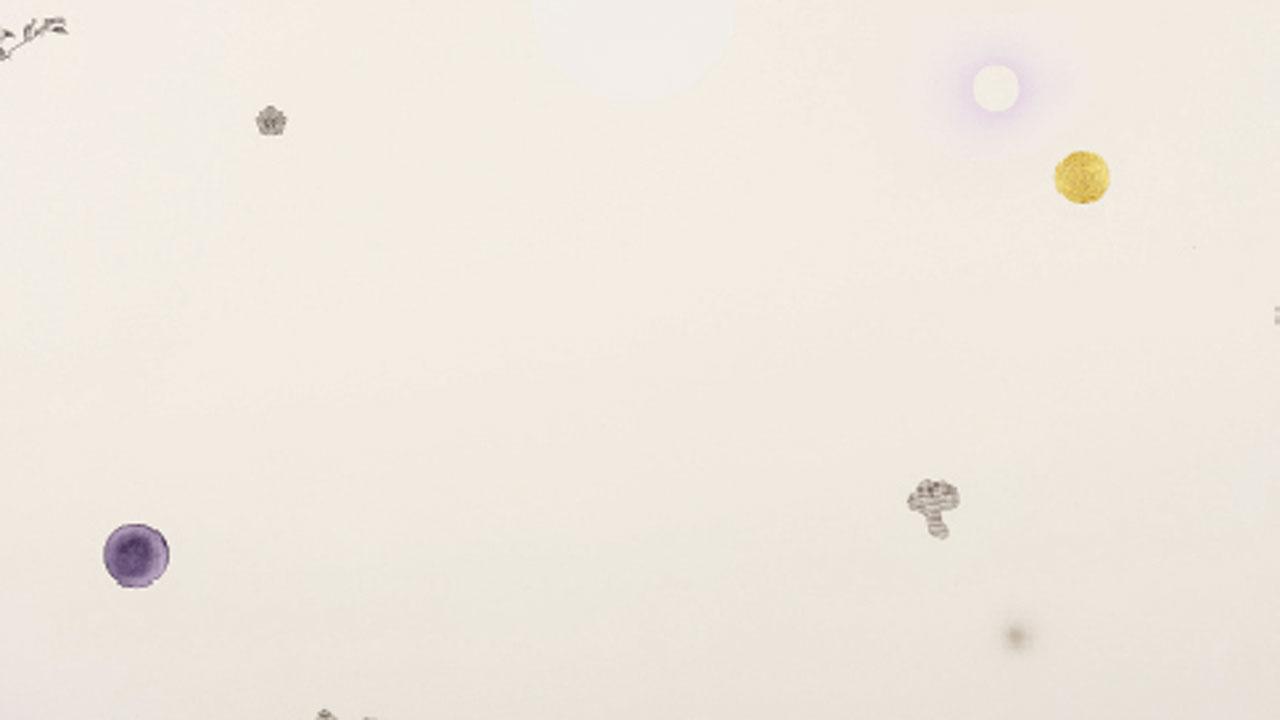Japanese artist Hiroe Saeki’s minimalist works at her solo debut contemplate humanity’s place between the spiritual and eternal world

Artist Hiroe Saeki brings the comfort she drew from nature during her travel around the world since the age of 11 to her paintings, now on display at Galerie Isa in Mumbai. PICS COURTESY/HIROe SAEKI & GALERIE ISA, MUMBAI
‘Genesis’ questions where and why life forms, and where it is going; ‘Joy’ ponders how one can live with this feeling. ‘Vista’ wonders if what is important is actually present in the real world, in the moments of time that interact with the landscape we see. In contrast, ‘Rebirth’ asks whether our real world is contained in the past or future, in life or death, in huge cycles or scales.
ADVERTISEMENT
These minimalist watercolour and ink artworks form a series that captures a sense of existential serenity and introspection by Osaka-born, Marseille-based artist Hiroe Saeki, providing a window into her ongoing internal artistic journey and philosophies. Her exhibition begins with an interpretation of her personal history and memories, gradually moving to her theories on life and philosophy. “I grew up with a complicated background,” Saeki narrates. “My parents divorced when I was 14. In the wider family, there were struggles for money and power, jealousy, sadness, depression and abundance of emotional drama. My art has been a reaction to this trauma.”

Rebirth #2, 2023. Pencil, Japanese ink, acrylic ink and gold leaf on paper mounted on wooden panel. 90 x 90 cm.
Saeki, who studied graphic design at the Faculty of Fine Art, Kyoto Seika University, continued to draw for years after her graduation, because she had “a strong desire to deliver a deeper message rather than being complicit in an overly consumerist society.” She recalls, “I had no particular knowledge of how to become an artist, but I was lucky enough in 2004 to have three small works exhibited in a group show curated by a friend, who worked at the Taka Ishii Gallery in Tokyo. My career took off quite rapidly after that show.”
Ashwin Thadani, gallery director at Galerie Isa, explains how, through meticulous restraint and a refined palette, Saeki invites us into a world of subtle intricacies, where every brushstroke and absence of it come together to tell a profound and eloquent story. “When I stumbled upon Hiroe’s captivating work on the website of the Japanese gallery that represents her, it instantly caught my attention. Her art embodies a gentle yet compelling minimalism, gracefully revealing a quiet strength in simplicity. The intricacy in each motif and her thought process magnetised me to her unique practice,” he shares.
The emergence of motifs in a void containing the past, present and future—and the use of flowers as a symbol of life—reflect in her work, reinforcing her conviction that the afterlife is part of our present. “This is something so deeply rooted in her practice, and, for me, is the highlight that draws me immensely to her serene and meditative works,” says Thadani.
For Saeki, having a solo exhibition is very fulfilling. She takes in the floor plan of a space and thinks about creating a story of origins and consequences. “I can somewhat intuitively see the whole picture—when I finish one drawing I can gradually see the beginning of the next scene to be drawn.” With each artwork—prepared on strong French watercolour paper soaked with water and stretched on wooden panels to give the work a softness but also an interesting dimensionality—Saeki integrates herself into its space. “I create a series of coincidences that build up one by one as the picture progresses.
Composition—the distance between objects—is most important for me as the composition is the context,” says Saeki.
She adds that she draws inspiration from being close to nature, which she describes as a joyful world unfolding in silence, as she speaks to us from Ladakh, where she travelled to right after the exhibition’s opening. She’s just back from climbing a 4,100-metre-high mountain, “the highest I’ve ever climbed—I could physically feel the air getting thinner and thinner, and had a strange feeling that this body of mine is a tool I’m borrowing while I’m alive.”
Having left Japan 11 years ago after receiving a grant from the Japanese government, she lived in London and Berlin, where the cold European climes proved to be far from inspiring. In contrast, she explains how the French port city of Marseille “with its blue skies and enduring sun, even in winter, is something that I am grateful for as if it were a miraculous gift. I feel that it has increased my energy for creating more work here.” Her next show will be at the India Art Fair in New Delhi in February 2024.
WHAT: Hiroe Saeki, Divinity, Duality and the Cosmos
WHERE: Galerie Isa, ground floor, Kamani Chambers, Ballard Estate
WHEN: Till October 21; Monday to Saturday, 11 AM to 6:30 PM
CONTACT: 9820048002
 Subscribe today by clicking the link and stay updated with the latest news!" Click here!
Subscribe today by clicking the link and stay updated with the latest news!" Click here!












